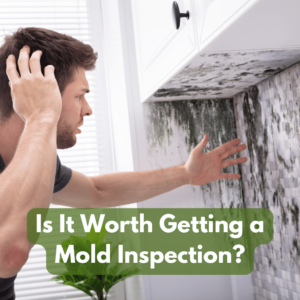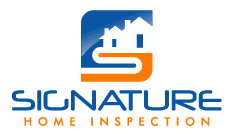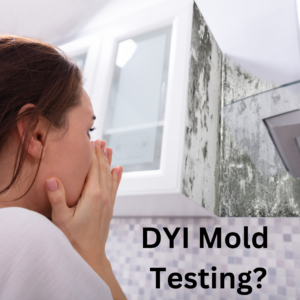When maintaining a safe and healthy home, mold is one of those silent threats that can cause significant damage if left unchecked. But is it worth getting a mold inspection? The short answer is yes—especially if you suspect mold growth or are buying/selling a home. In this blog, we’ll explore the importance of mold inspections, the risks of ignoring mold, and how a professional inspection can save you time, money, and stress.
What Is a Mold Inspection?
A mold inspection is a thorough assessment conducted by a certified professional to identify the presence of mold in your home. During the inspection, the expert will examine areas prone to moisture, such as basements, bathrooms, and attics, and may use specialized tools like moisture meters and infrared cameras to detect hidden mold.

Is It Worth Getting a Mold Inspection?
The goal of a mold inspection is not just to find mold but to determine the source of moisture causing it. Without addressing the root cause, mold will likely return, even after removal.
Why Is Mold a Concern?
Mold is more than just an unsightly nuisance. It can pose serious risks to both your home and your health. Here’s why mold inspections are worth considering:
- Health Risks: Mold exposure can trigger allergies, respiratory issues, and even more severe health problems, especially for individuals with asthma or weakened immune systems.
- Structural Damage: Mold can weaken wooden structures, drywall, and other building materials, leading to costly repairs.
- Decreased Property Value: If you’re selling your home, mold can be a significant red flag for potential buyers and may lower your home’s value.
When Should You Get a Mold Inspection?
Not sure if you need a mold inspection? Here are some scenarios where it’s worth scheduling one:
- Visible Mold Growth: If you see mold, even in small amounts, it’s a sign that there could be more hidden behind walls or under floors.
- Musty Odors: A persistent musty smell is often an indicator of mold growth, even if you can’t see it.
- Water Damage: If your home has experienced flooding, leaks, or high humidity, mold will likely follow.
- Buying or Selling a Home: A mold inspection can give buyers peace of mind and help sellers address issues before listing their property.
- Health Symptoms: If you or your family are experiencing unexplained allergies or respiratory issues, mold could be the culprit.
The Benefits of a Professional Mold Inspection
While DIY mold tests are available, they often lack the accuracy and thoroughness of a professional inspection. Here’s why hiring a certified mold inspector is worth it:
- Comprehensive Assessment: Professionals know where to look for mold and can identify hidden growth that untrained eyes might miss.
- Accurate Identification: Not all mold is the same. A professional can determine the type of mold and its potential risks.
- Moisture Detection: Inspectors use advanced tools to pinpoint moisture sources, helping you address the root cause of mold growth.
- Detailed Report: A professional inspection includes a detailed report with findings, photos, and recommendations for remediation.
The Cost of a Mold Inspection
One of the most common questions homeowners ask is, “Is a mold inspection worth the cost?” The average cost of a mold inspection ranges from 300 to 600, depending on your home’s size and the inspection’s extent. While this may seem like an added expense, it’s a small price compared to the potential costs of mold damage or health issues.
DIY vs. Professional Mold Inspections
While DIY mold tests are cheaper, they often provide limited information and can’t replace a professional inspection. While DIY kits may detect mold, they won’t identify the source of moisture or the extent of the problem. A professional mold inspection is worth the investment for a thorough and accurate assessment.
How to Choose a Mold Inspector
Not all mold inspectors are created equal. Here are some tips for choosing a qualified professional:
- Certifications: Look for inspectors certified by organizations like the National Association of Mold Remediators and Inspectors (NAMRI) or the Indoor Air Quality Association (IAQA).
- Experience: Choose an inspector with a proven track record and positive reviews.
- Comprehensive Services: Opt for a company that offers inspection and remediation services, if needed.
Preventing Mold in Your Home
While mold inspections are essential, prevention is always better than cure. Here are some tips to keep mold at bay:
- Control Humidity: Use dehumidifiers and ensure proper ventilation in high-moisture areas like bathrooms and kitchens.
- Fix Leaks Promptly: Address plumbing leaks, roof leaks, and other sources of water intrusion immediately.
- Regular Maintenance includes Cleaning gutters, inspecting your roof, and ensuring your home’s drainage systems are functioning properly.
Conclusion: Is a Mold Inspection Worth It?
So, is it worth getting a mold inspection? Absolutely. Whether buying, selling, or simply maintaining your home, a professional mold inspection can protect your property and health. By identifying mold early and addressing the underlying causes, you can avoid costly repairs and ensure a safe living environment.
If you’re ready to schedule a mold inspection or have questions about the process, contact Signature Home Inspection today. And for expert digital marketing services to grow your business, reach out to Hoopla Digital Marketing. Let’s keep your home—and your business—in top shape!

